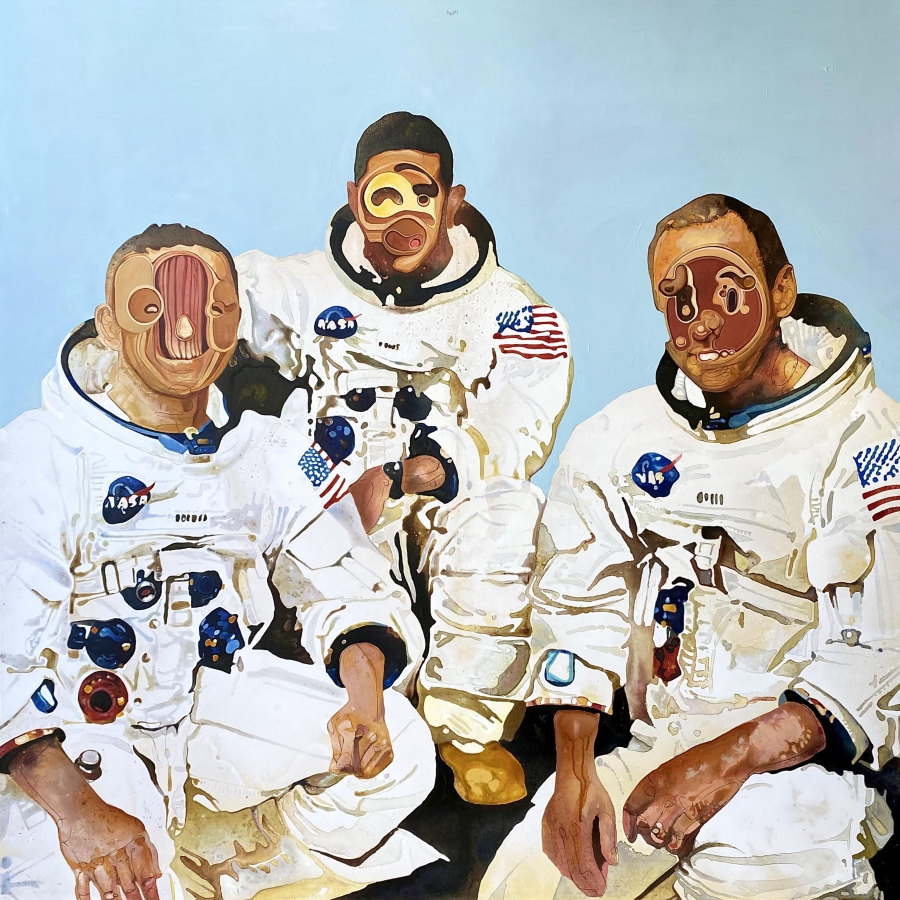
Artist’s Biography
Jorge Rodríguez, born in Holguín in 1991, emerges as a fascinating figure in the world of contemporary art. His works, characterized by the deformation and disfigurement of human faces, challenge conventional notions of beauty and symmetry, inviting viewers to explore the uncharted territory of the monstrous and the immense.
His journey as an artist began with an unusual source of inspiration: his parents’ medical books, both of whom were doctors. In these books, Jorge found watercolors of the human figure that captured his attention and sparked his curiosity about anatomy. This interest led him to art schools in Holguín, where he had an influential teacher who introduced him to the world of art and words. Jorge was drawn to the search for meaning, and this passion led him to explore art as a means of expression.
Throughout his career, Jorge Rodríguez has experimented with teratology, the study of abnormal creatures in zoology. His work focuses on the deformation of human faces, challenging the notion of “normal” and “beautiful.” Through the distortion of features, the loss of eyes, and the creation of complex and ambiguous traits, Rodríguez invites viewers to reflect on beauty in the unusual and the peculiar.
In his series “Theratos,” the artist delves into the historical space portrait, exploring the space race between the United States and the former Soviet Union during the Cold War. His distorted and grotesque portraits challenge conventional notions of space heroes and reflect a unique vision of history.
Jorge Rodríguez also works with numbers and symmetry in his works, seeking to break the obsession with symmetry and create images that challenge conventional perception. His paintings and drawings often depart from the “beautiful” and the “harmonious,” immersing the viewer in a disquieting and absorbing visual experience.
Jorge Rodríguez is an artist who challenges the boundaries of aesthetic perception, exploring beauty in deformation and the unusual. His work takes us to a world where the ugly and the terrible can be equally exciting, and where distortion becomes a form of artistic expression. Through his exploration of teratology and anatomy, Rodríguez invites us to look beyond the conventional and find beauty in the unexpected and divergent. His work is a reminder that profound allure and fascination also reside in the monstrous and the immense.
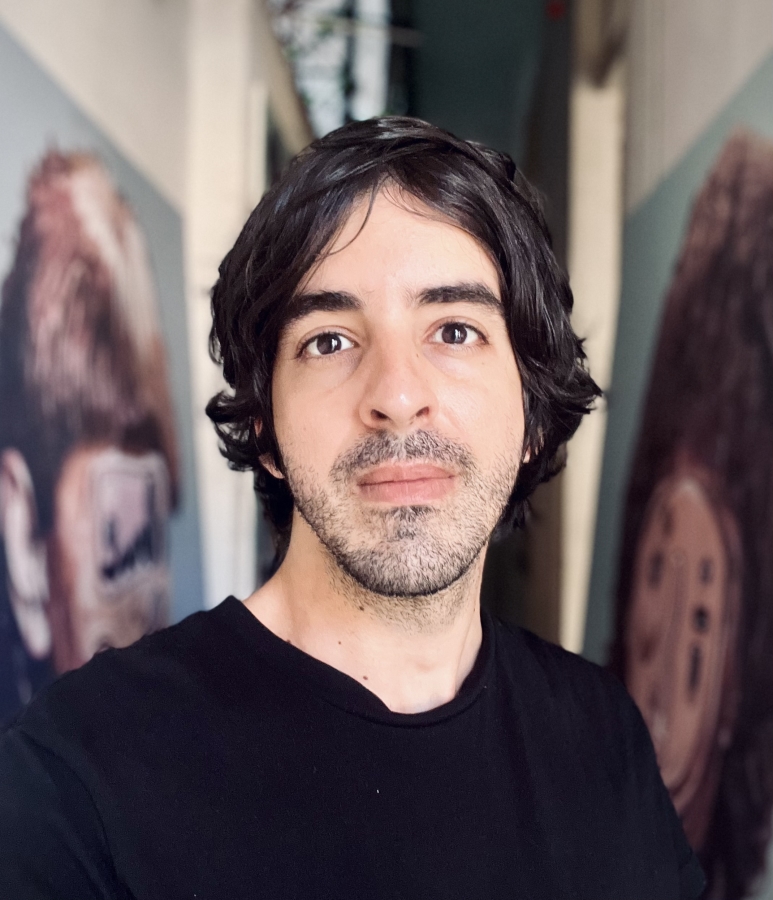
Interview Artist
Jorge Rodríguez
By Carol Real
What sparked your interest in the deformation and disfigurement of human faces in your art?
The human face has very particular proportions, and when altered, it begins to dehumanize these features, creating an alternative being that retains some familiar patterns. For me, deforming is an act of questioning nature and our understanding of the familiar. Disfiguring brings me closer to my standards of creative freedom in art. I am passionate about constructing various facial shapes and exploring endless variations.
How did your parents’ medical books influence your artistic development?
I grew up in a household filled with literature about medical practices, as my parents and other relatives are doctors. Medical books were my first books; I would flip through them in search of illustrations. These were anatomical and fascinated me, but they had something abrupt and incomprehensible for my age. This early sense of the unknown is what I have been trying to emulate in my art–the feeling of discovering something truly new and strange that I found in the illustrations of these books.

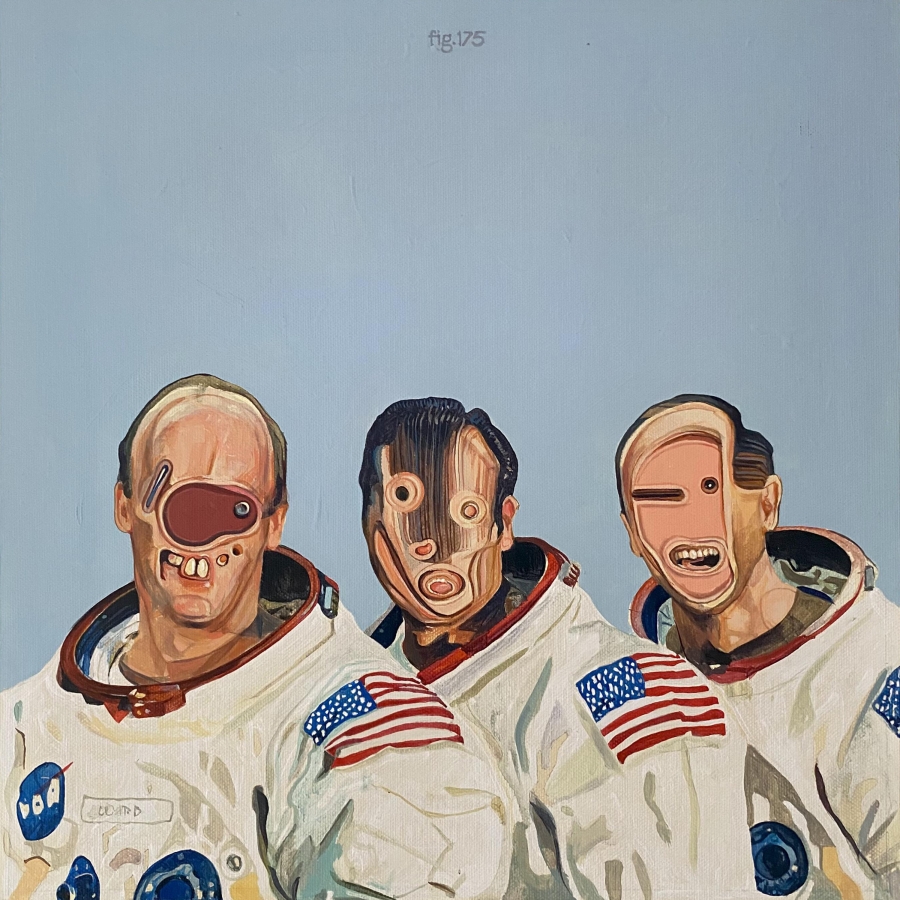
What is the significance of challenging our preconceived notions of beauty through art?
Distortions in my artistic practice are the fundamental basis for questioning the known in the visual realm, where representations in art play a fundamental role in the concepts of beauty, the sublime, and the grotesque. In my art, I play with these perceptions of our senses and cultural conditioning regarding the patterns of what we see as individuals in my portraits. I believe that what truly makes a work beautiful or ugly is the viewer, and this perception is inherently contained within the viewer.
What obstacles did you encounter in creating imperfect and denaturalized beings in your exhibition, Theratos?
The challenge in my practice lies in finding new forms that challenge and provoke a sense of strangeness and absurdity. It is quite a challenge to create a new distortion in my portraits, as the world of shapes is infinite, and this truth often paralyzes me. Developing numerous variations of the same portrait is an exercise I often undertake, achieving different faces but with an immediate kinship to their original design.
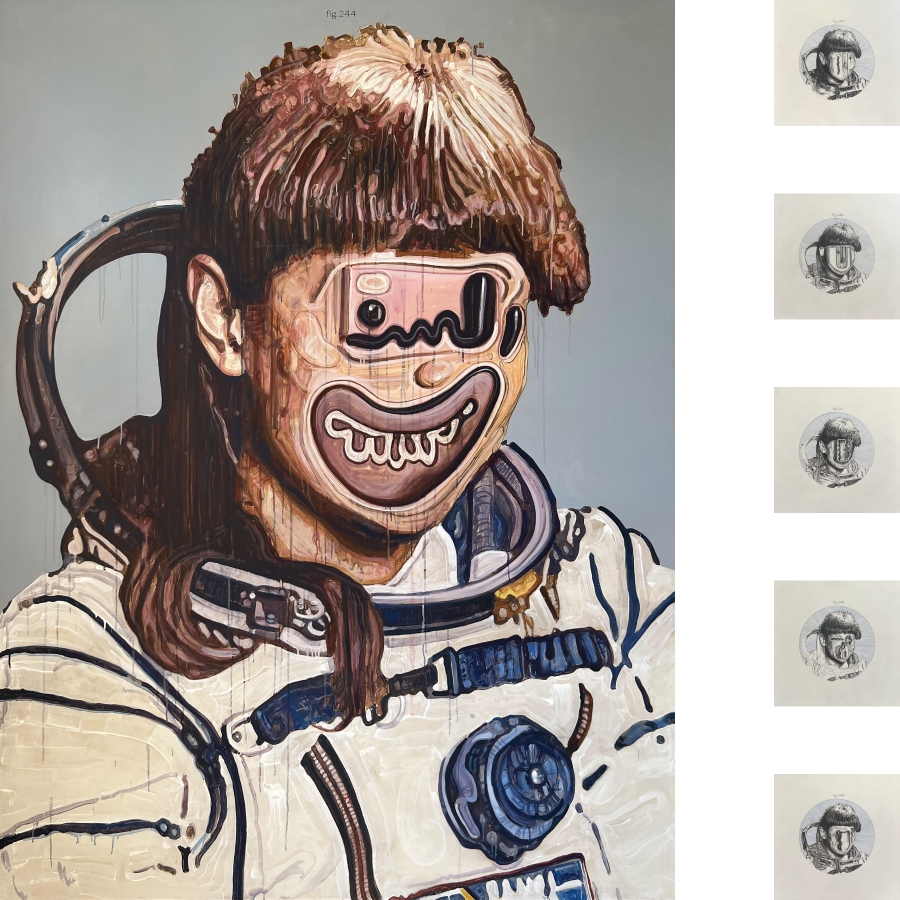
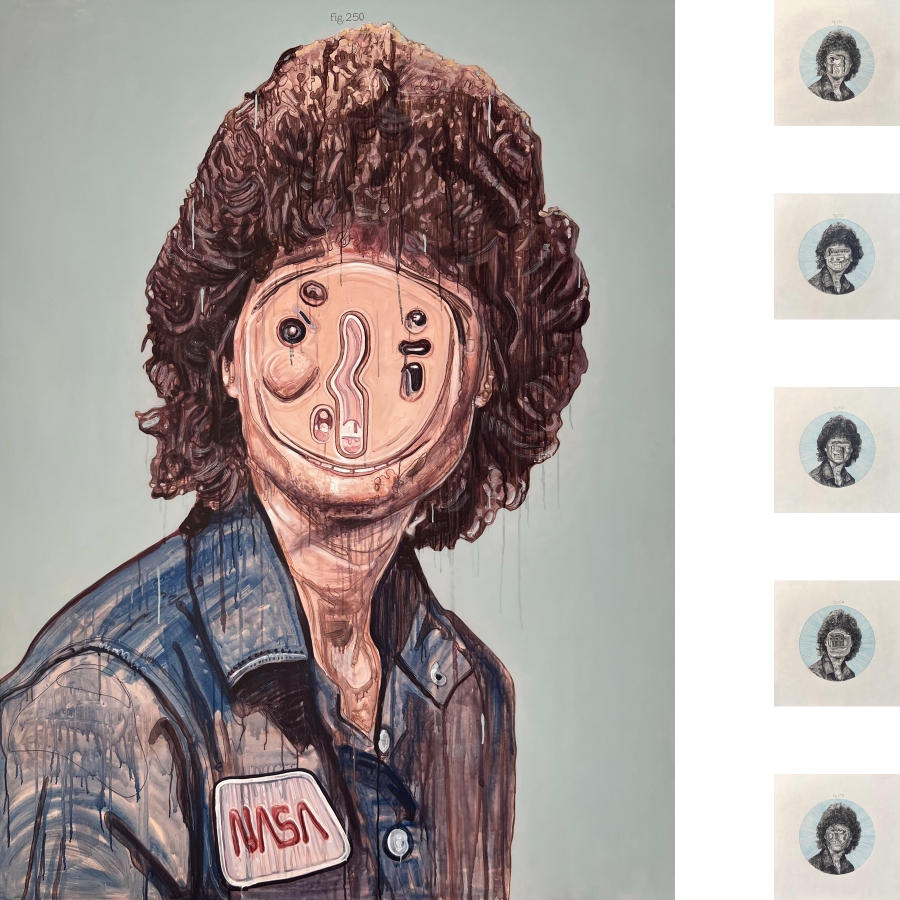
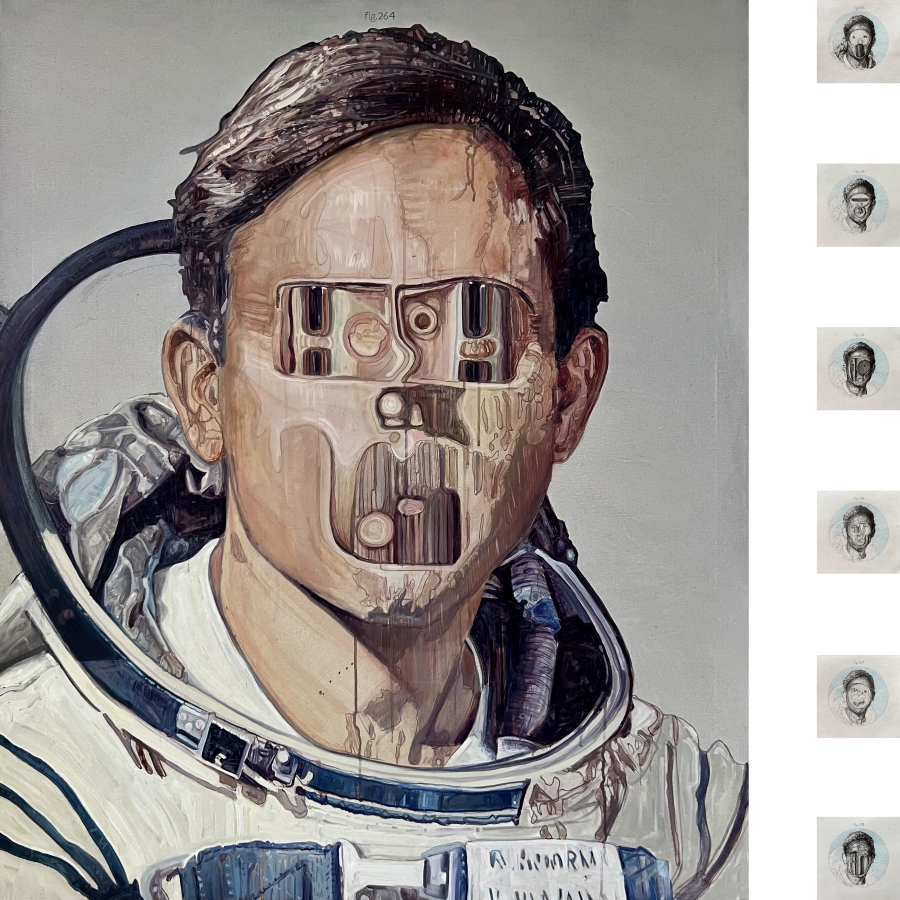
What initially drew you to explore rarity and difference in your art?
My attraction to the unknown and the alternative was the catalyst for my current art. Strange, sometimes inexplicable, and indescribable shapes have always fascinated me. They have an immediate impact on my intellect, questioning and making me aware of the infinite possibilities in which physical forms can manifest. The limits of my creation are in my imagination, which both fascinates and terrifies me.
What creative challenges do you encounter when working with the deformation of the human figure?
The challenge lies in composing new deformations and ensuring that there are marked differences between them, to create a unique being as a premise.
What is the relationship between your work and the idea of the sublime in art?
For me, the idea of the sublime is something that sometimes transcends reason, heightening the senses and questioning understanding. It is something of a special nature that cannot go unnoticed, evoking a strange fascination in the viewer. I attempt to build my work around these ideas.
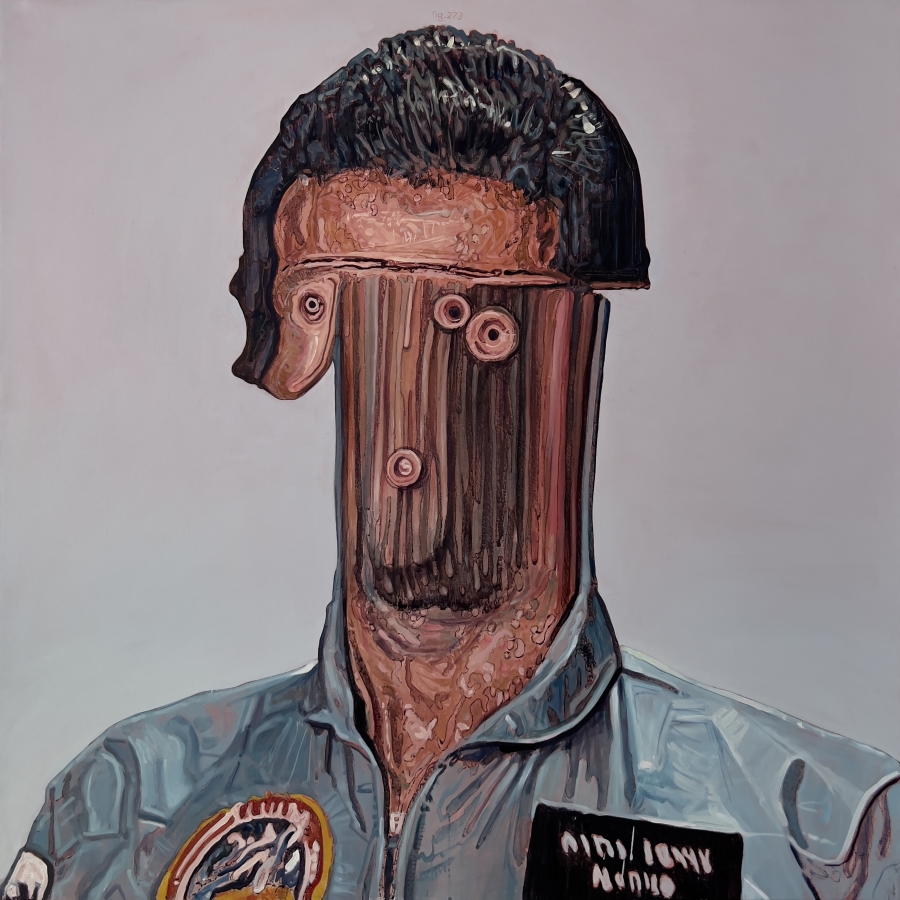
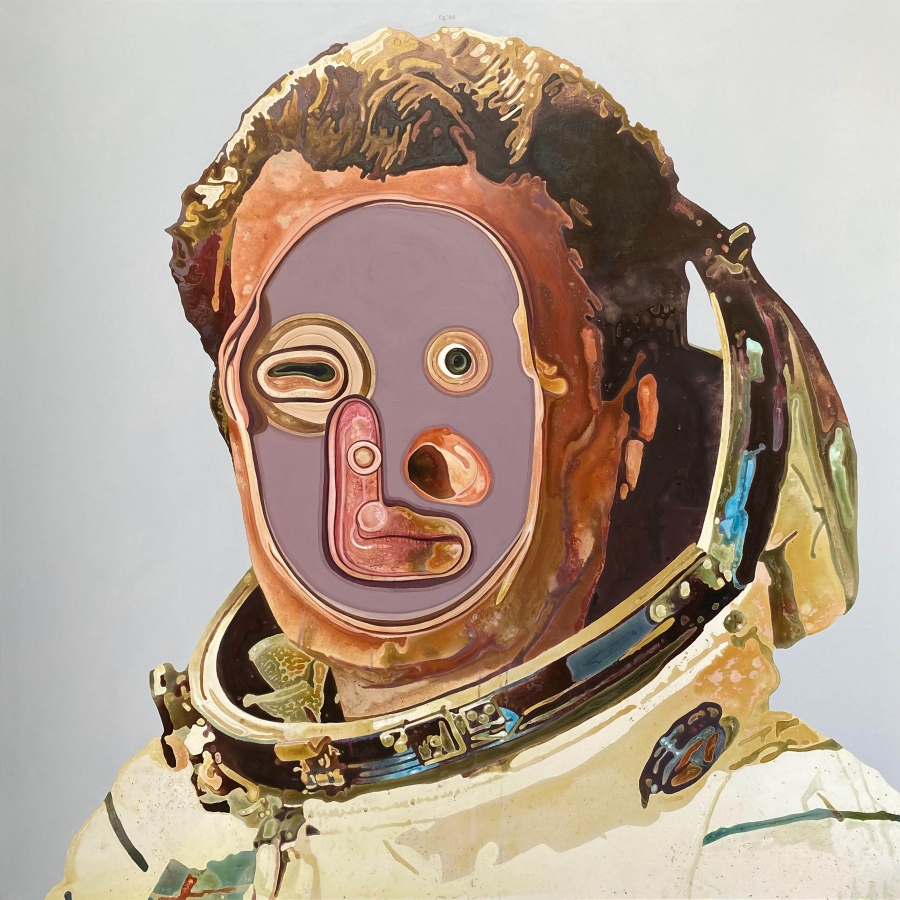
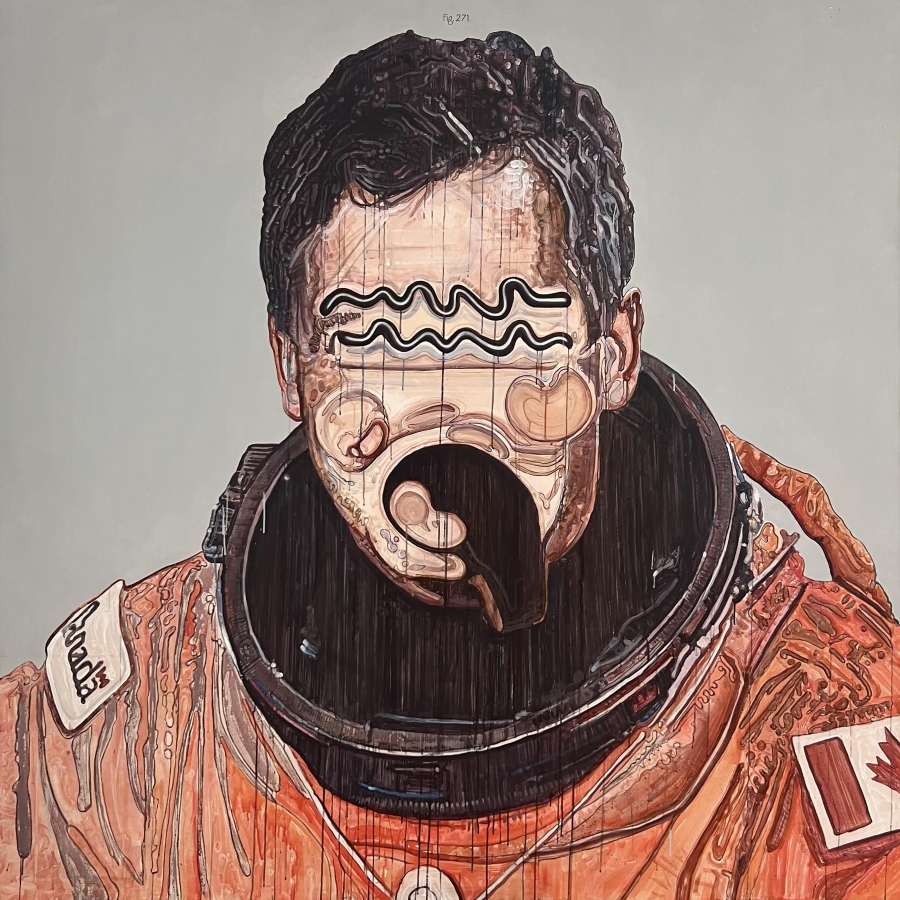
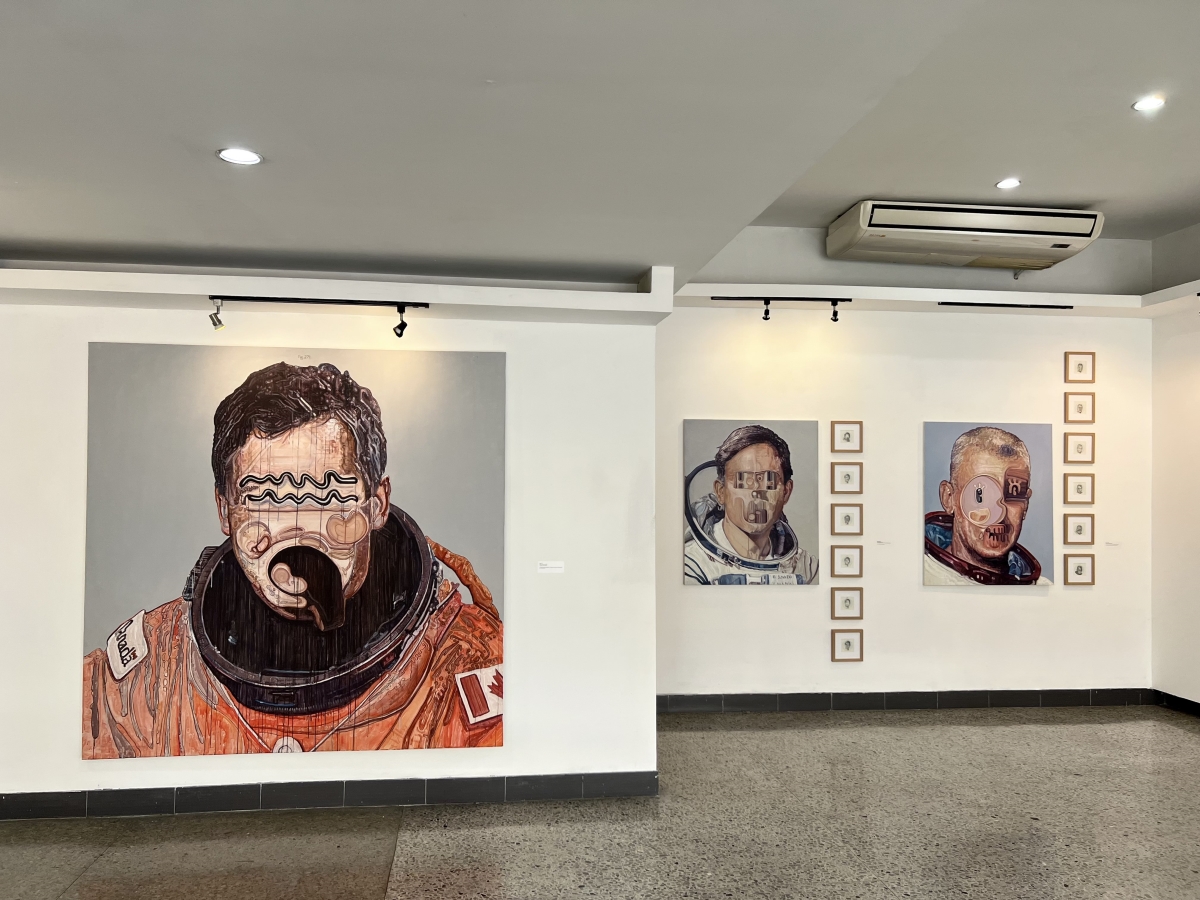
What motivates you to continue exploring new approaches and concepts in your art?
My motivation is to explore and develop new forms, continually pushing the limits of my creativity, refining my technique, and delving into new creative formats to create a unique universe.
Why did you decide to work with numbers and symmetry to challenge conventional perception?
In my adolescence, I was fascinated by metaphysics, numerology, and concepts in literature that tried to explain the universe unconventionally, often questioning logic and reason. From here, I began to see the world in a more organized way, where there were mathematical proportions in beings and things. I also started using specific formats in my works, such as measurements that were multiples of 3, 7, and 9 or had some relationship with these numbers. As for the composition of my figures, they tend to be placed in the center of the canvas or paper, giving them a certain symmetry. I have always been obsessed with the square format. This practice began to frame my art in certain patterns, which led me to other peculiarities of my work, such as chronological numbering right in the center at the top of the piece.
What led you to depict space heroes in a distorted and grotesque manner in “Theratos”?
This series is about the Space Race between the United States and the former Soviet Union. In it, I appropriate the official space portraits of their most prominent astronauts and cosmonauts, distort them, and display them as phenomena of the era. The idea is to question the image of the space hero and examine the differences between these two superpowers during the Cold War.
Image credits: All images courtesy of the artist
Editor: Kristen Evangelista